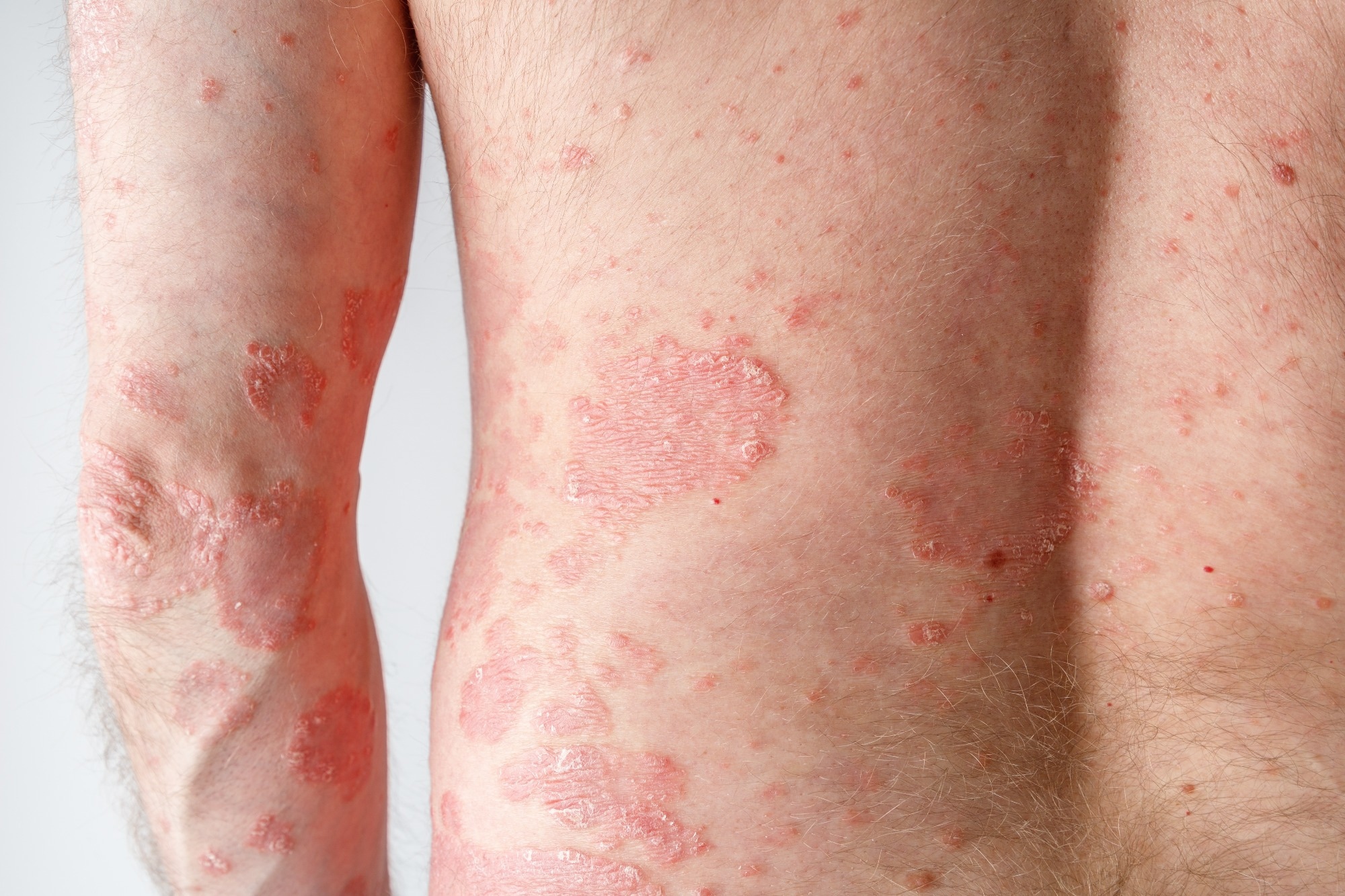New research reveals how ultra-processed foods may fuel inflammation and worsen active psoriasis, shedding light on diet’s crucial role in managing this chronic condition.
Study: Ultraprocessed Food Intake and Psoriasis. Image Credit: BartTa / Shutterstock.com
In a recent study published in JAMA Dermatology, researchers investigated the association between ultra-processed food (UPF) intake and active psoriasis status.
What causes psoriasis?
Psoriasis is a chronic inflammatory skin disease with a multifactorial etiology involving genetic, immune, and environmental factors. Diet, particularly that consisting of pro- and anti-inflammatory foods, has been recognized as a modifiable factor influencing inflammation and quality of life in individuals diagnosed with inflammatory diseases.
The consumption of UPFs, which are characterized by high levels of added sugars, fats, and artificial additives, has been implicated in the development of various health conditions, including obesity, cardiovascular disease, and type 2 diabetes, all of which share inflammatory pathways with psoriasis. Despite these associations, the specific role of UPFs in psoriasis remains unclear, thus necessitating further research to clarify their impact on disease activity.
About the study
A cross-sectional analysis was conducted using data from the NutriNet-Santé cohort collected between November 29, 2021, and June 6, 2022. Participants 15 years or older were included and classified into three groups based on their self-reported psoriasis status: never had, nonactive, or active.
UPF intake was assessed using dietary records, with daily UPF consumption quantified in grams, and study participants were characterized into tertiles, ranging from lowest to highest intake. Demographic, lifestyle, and clinical variables were also collected, including age, sex, educational level, body mass index (BMI), smoking status, physical activity, alcohol intake, and comorbidities such as depression, diabetes, and cardiovascular disease.
The associations between UPF intake and psoriasis status were evaluated using multinomial logistic regression models. To minimize bias, potential confounding factors, including sociodemographic factors, BMI, and comorbid conditions, were adjusted. Sensitivity analyses were performed to assess the accuracy of the findings, including cases with dermatologist-validated psoriasis diagnoses and models excluding missing data.
Statistical significance was determined using two-sided tests, with a P-value less than .05 considered significant. Data analysis was performed using SAS, version 9.4. Ethical approval was obtained from the French Institute for Health and Medical Research Institutional Review Board, and all study participants provided electronic informed consent.
Study findings
The current study included 18,528 participants, with a median age of 62 years, 74% of whom were female. Ten percent of the study cohort reported having psoriasis, with four percent and six percent of cases classified as active and nonactive, respectively.
The active psoriasis group had a lower proportion of females at 68% compared to 75% and 74% of nonactive and never-had groups, respectively. Individuals with active psoriasis were also more likely to be obese at a prevalence of 16% as compared to those with the nonactive and never-had groups at 11% and 9%, respectively. High-intensity physical activity was less frequently reported in those with active and nonactive psoriasis at 38% and 39%, respectively, as compared to 42% without a history of psoriasis.
Comorbidities were more frequently reported in individuals with active psoriasis than in those who never had psoriasis. For example, cardiovascular disease was reported in 7% of those with active psoriasis, compared to 5% in the never-had group. Likewise, diabetes and inflammatory rheumatism were more prevalent in the active group, at 6% and 9%, respectively, as compared to the never-had group, at 4 and 3%, respectively.
The unadjusted analysis identified a significant difference in UPF intake, with higher consumption reported in those with active psoriasis. After adjusting for confounding factors, those with the highest tertile of UPF intake were 36% more likely to have active psoriasis as compared to those in the lowest tertile. Sensitivity analyses showed consistent findings; however, these associations were not statistically significant when psoriasis cases were validated by a dermatologist.
Further analyses indicated that the association between UPF intake and active psoriasis remained significant after accounting for BMI, thus suggesting that UPF intake independently contributes to psoriasis activity. However, no significant association was observed between UPF intake and nonactive psoriasis in both univariate and adjusted models.
Conclusions
The current study identified a significant association between high UPF intake and active psoriasis, independent of confounding factors such as BMI, age, and comorbidities. Furthermore, individuals with active psoriasis exhibited a higher prevalence of obesity and comorbid conditions, such as cardiovascular disease and diabetes, as compared to those without psoriasis. Taken together, these findings indicate that UPF intake may contribute to the proinflammatory mechanisms underlying active psoriasis.
Source link : News-Medica

